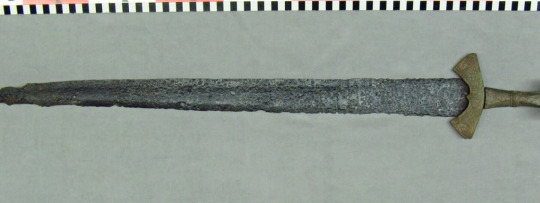Text
One thing I've learned in my Intro to Archaeology Class at Indiana University is how gender is studied in archaeology. Gender is not equal to sex, rather it is more about ideology and performance. As a genderqueer person, I enjoyed learning about this in particular. When gender is studied in archaeology, there’s room left for multiple interpretations because we never really know what exactly is going on with gender in the past since we can’t go back and ask ancient people about it. However, there are problems with how gender is interpreted in archaeology, as it can be oversimplified and viewed in a binary way when neither sex nor gender are, or ever have been, binary.
One case study that interested me in particular was the Suontaka grave in Finland (elaborate) (11th or 12th century AD). In the grave there were both weapons associated with male burial and jewelry associated with female burial. There is some argument on whether the bronze hilted sword found in the grave actually belonged to the person that was buried, as it was separated somewhat from the other grave goods. It was also suggested it could be a double burial, and therefore actually belong to a male, but that theory is implausible.
From DNA analysis, it was proven that the individual most likely had XXY chromosomes, meaning they were most likely intersex (Klinefelter syndrome, a male born with an extra copy of the X chromosome that mainly affects the development of secondary sex characteristics)
I think this case is really interesting to research because it shows gender/sex diversity in the archaeology record. Although, again, we have no way to know how this person would have been identified, it still shows that those outside of the binary have always existed, and in the case of this burial, have been respected by society.


Here are some pictures of what was found in the grave (from the paper linked below that I read for the class :-)
SOURCE:
3 notes
·
View notes